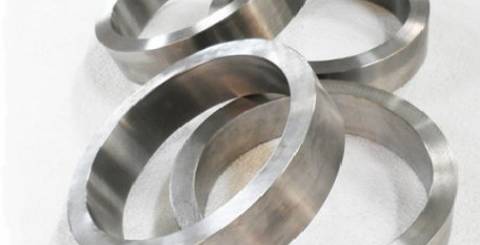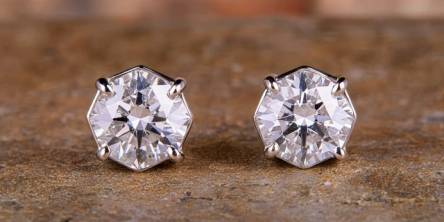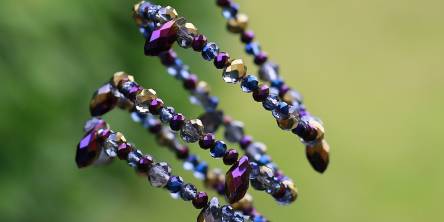The Evolution of Stainless Steel Forged Rings

Stainless steel forged rings represent a remarkable fusion of metallurgical innovation, engineering prowess, and industrial need. Over the course of history, these essential components have undergone a captivating evolution, playing a critical role in shaping various industries. From their humble beginnings to the sophisticated creations of today, the evolution of stainless steel forged rings offers a fascinating journey through material science, real-world applications, and manufacturing techniques.
Early Innovations and Origins: The roots of stainless steel forged rings trace back to ancient blacksmithing, where early metallurgists heated and shaped iron and steel to create tools, weapons, and rudimentary components. However, it wasn't until the late 19th century that stainless steel, a corrosion-resistant alloy, was discovered. The addition of chromium to steel by metallurgists such as Harry Brearley and Leon Guillet led to the birth of stainless steel, marking a turning point in material science.
Industrial Revolution and Advancements: The Industrial Revolution gave impetus for the rapid development of manufacturing techniques. With the newfound understanding of stainless steel's exceptional properties, forged rings emerged as vital components in various sectors. Their ability to withstand corrosion, extreme temperatures, and mechanical stress made them invaluable for applications in chemical processing, oil and gas, aerospace, and more. Early forging methods were characterized by traditional hammering and stamping techniques, which produced robust but relatively simple shapes.
Metallurgical Mastery - Refining the Process: As metallurgical knowledge expanded, so did the precision and complexity of stainless steel forged rings. Advanced techniques like open-die and closed-die forging allowed for greater control over shape, size, and material properties. Engineers and metallurgists could tailor the alloy composition to suit specific needs, resulting in forged rings that could withstand highly demanding environments, as well as stainless steel flanges. The evolution of heat treatment processes further enhanced the strength and durability of these components, enabling them to excel in critical applications.
Technological Leap - Modern Forging Techniques: In the latter half of the 20th century witnessed a technological leap in the forging industry. The advent of computer numerical control and computer-aided design machinery revolutionized the precision and efficiency of forging processes. This evolution allowed for the creation of intricate and precisely engineered stainless steel forged rings, capable of meeting performance requirements and stringent tolerances. Furthermore, the use of simulation software enabled engineers to model and optimize the forging process, minimizing material waste and enhancing overall product quality.
Diversification and Customization: With advancements in manufacturing techniques, stainless steel forged rings diversified to cater to an ever-expanding array of industries. Aerospace saw the development of forged rings for jet engines, where high-performance alloys were meticulously crafted to withstand mechanical stresses and extreme temperatures. Similarly, the oil and gas sector relied on these components for offshore drilling rigs, pipelines, and processing equipment. The medical field benefited from the use of stainless steel forged rings in surgical instruments, where hygiene and durability were paramount.
Aesthetic and Structural Integration: Stainless steel forged rings began to make appearances in the realm of aesthetics and architecture. The sleek, modern look of stainless steel, coupled with its corrosion resistance, made it an ideal choice for decorative elements, sculptures, and structural applications in contemporary urban design.
Sustainability and Future Horizons: The evolution of stainless steel forged rings continues in the 21st century with a focus on sustainability, material efficiency, and advanced manufacturing techniques. Forging processes are becoming increasingly energy-efficient and environmentally conscious, aligning with global sustainability goals. The integration of additive manufacturing, or 3D printing, pushes the limits of what is possible in terms of design complexity and material optimization.
The evolution of stainless steel forged rings is a testament to human ingenuity, scientific discovery, and the continuous quest for improving materials and processes. From humble beginnings in traditional blacksmithing to the advanced manufacturing techniques of today, these components have evolved into critical elements that underpin the modern industry. As technology advances, stainless steel forged rings will undoubtedly keep going to shape and redefine the possibilities across a diverse range of applications.
Similar Articles
All those small details in style transform an outfit instantly from shabby to chic. Belts, scarves, and fashion jewellery are those accessories that become the final touches to such a simple look, making it memorable
Keep your diamond earrings shining like new with simple, safe cleaning steps using tools you already have at home.
Determining the value of estate jewelry may seem like a task better suited for the experts when not familiar with it. Evaluating antique inventory demands an understanding of all the components that determine value
Birthstones have a special place in jewelry, symbolizing both personal meaning and cultural heritage. Each stone is tied to a specific month, making it a great way to celebrate birthdays and anniversaries. When chosen with care, a birthstone can hold deep significance, strengthening the recipient's connection to it beyond just its appearance.
In the past couple of years, we’ve seen more and more people being drawn to bold patterns and colors. The logic behind it is understandable: when you want to brighten up your life, it’s best to splash some color into it
Choosing the perfect symbol of your union is one of the most significant decisions when planning a wedding. Whether you lean towards traditional elegance or modern minimalism, the debate between wedding rings and wedding bands often arises
The Audemars Piguet (AP) Perpetual Calendar is an investment. Buying it is not just about adding a watch to your collection but about owning a piece of horological history.
Explore the enchanting world of color diamonds with our ultimate shopping guide. Discover rare hues, expert tips, and perfect choices for any taste.
In as much as communication of love, devotion and or perpetuity, there is little that can be said that captures it as much as a diamond ring. Being a part and parcel of engagement rings, anniversary bands and other similar bands, diamond rings have been adorning the rings of centuries, metaphorizing unbreakable bonds of two loving hearts









